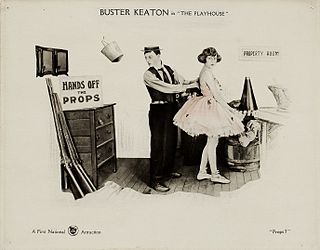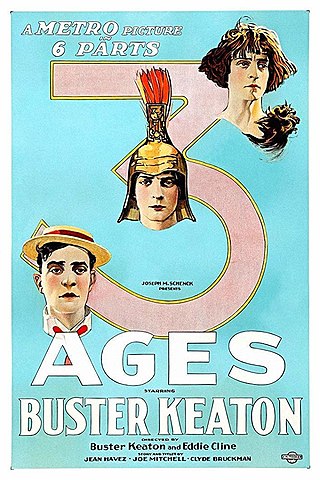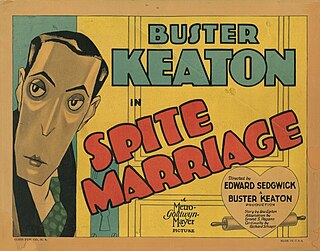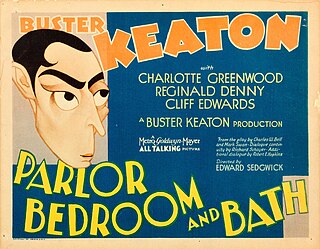Plot
Helen (Andre), a bride to be who has been pressured into marriage by her father flees the church before her husband to be arrives. At the same time Milton (Keaton) is woken up by a stranger he drunkenly agreed to marry the night before, who tells him they have a wedding scheduled in a few minutes time. Milton runs off intent on living in the mountains for the foreseeable future. On his way he stops to pick up a hitchhiker who turns out to be Helen and the two decide to go on the run together.
On their journey they have a heated standoff with an aggressive driver named Mortimer who refuses to back up and end up running him off the road. Later that day as Helen sets up camp, Milton goes fishing and catches many fish by throwing Mexican jumping beans into the water which makes the fish jump into his net.
Milton arrives back at the camp at the same time as Mortimer who he persuades not to hurt him in exchange for a meal. Mortimer steals the key to Milton's car and chases Helen into the tent in order to kiss her but when he emerges he sees that Helen has escaped the tent and he has in fact been kissing Milton. Helen convinces Milton to go swimming with her so that Milton can retrieve the key to the car from his clothes.
Milton's jilted fiancée arrives at the lake and tries to force Milton to return to town with her. Helen sees Milton and his fiancée and leaves heartbroken. While Milton's fiancée is trying to force Mortimer to return the key to the car, Milton realizes that he put on the drivers pants when he emerged from the lake and the key is in the pocket. Milton drives off and catches up with Helen and the two gleefully reunite.

Sherlock Jr. is a 1924 American silent comedy film starring and directed by Buster Keaton and written by Clyde Bruckman, Jean Havez, and Joseph A. Mitchell. It features Kathryn McGuire, Joe Keaton, and Ward Crane.

The Playhouse is a 1921 American two-reel silent comic trick film written by, directed by, and starring Buster Keaton. It runs for 22 minutes, and is most famous for an opening sequence where Keaton plays every role.

I Dood It is a 1943 American musical comedy film starring Red Skelton and Eleanor Powell, directed by Vincente Minnelli, and released by Metro-Goldwyn-Mayer. The screenplay is by Fred Saidy and Sig Herzig and the film features Richard Ainley, Patricia Dane, Lena Horne, and Hazel Scott. John Hodiak plays a villain in this production, just his third movie role. Jimmy Dorsey and his Orchestra provide musical interludes.

Harold Goodwin was an American actor who performed in over 225 films.

Three Ages is a 1923 black-and-white American feature-length silent comedy film starring comedian Buster Keaton and Wallace Beery. The first feature Keaton wrote, directed, produced, and starred in, Keaton structured the film like three inter-cut short films. While Keaton was a proven success in the short film medium, he had yet to prove himself as a feature-length star. It has been alleged that, had the project flopped, the film would have been broken into three short films, although this has been disputed by film historians who note that neither Keaton nor his associates made this claim in their lifetimes. The structure also worked as a parody of D. W. Griffith's 1916 film Intolerance.

The Paleface is a 1922 American silent comedy Western two-reeler film starring Buster Keaton.

The Scarecrow is a 1920 American two-reel silent comedy film starring Buster Keaton, and written and directed by Keaton and Edward F. Cline.

Go West is a 1925 American silent Western comedy film directed by and starring Buster Keaton.

Spite Marriage is a 1929 American silent comedy film co-directed by Buster Keaton and Edward Sedgwick and starring Keaton and Dorothy Sebastian. It is the second film Keaton made for MGM and his last silent film, although he had wanted it to be a "talkie" or full sound film. While the production has no recorded dialogue, it does feature an accompanying synchronized score and recorded laughter, applause, and other sound effects. Keaton later wrote gags for some up-and-coming MGM stars like Red Skelton, and recycled many gags from Spite Marriage, some shot-for-shot, for Skelton's 1943 film I Dood It.

Parlor, Bedroom and Bath is an American pre-Code comedy film starring Buster Keaton, released by Metro-Goldwyn Mayer in 1931. It was Keaton's third talking picture after his successful silent career.

The Frozen North is a 1922 American short comedy film directed by and starring Buster Keaton. The film is a parody of early western films, especially those of William S. Hart. The film was written by Keaton and Edward F. Cline. The film runs for around 17 minutes. Sybil Seely and Bonnie Hill co-star in the film.

Day Dreams is a 1922 American short comedy film directed by and featuring Buster Keaton. It is most famous for a scene where Keaton finds himself on the inside of a riverboat paddle wheel. It is a partially lost film and available from public domain sources.
One Run Elmer is a 1935 American short comedy film featuring Buster Keaton, and directed by Charles Lamont.
Hayseed Romance is a 1935 American short comedy film featuring Buster Keaton.
The E-Flat Man is a 1935 American short comedy film featuring Buster Keaton.
Three on a Limb is a 1936 American short comedy film directed by Charles Lamont and starring Buster Keaton.
Jail Bait is a 1937 American short comedy film starring Buster Keaton.

The Sea Hawk is a 1924 American silent adventure film about an English noble sold into slavery who escapes and turns himself into a pirate king. Directed by Frank Lloyd, the screen adaptation was written by J. G. Hawks based upon the 1915 Rafael Sabatini novel of the same name. It premiered on June 2, 1924, in New York City, twelve days before its theatrical debut.

The Buster Keaton Story is a 1957 American biographical drama film directed by Sidney Sheldon and written by Sidney Sheldon and Robert Smith, following the life of Buster Keaton. The film stars Donald O'Connor, Ann Blyth, Rhonda Fleming, Peter Lorre, Larry Keating and Jackie Coogan. It was released on April 21, 1957, by Paramount Pictures. The film was described by AllMovie as "sublimely inaccurate" regarding details of Keaton's life. It was produced by Paramount Pictures, which paid Keaton $50,000 for the rights to his life story.
Paradise for Buster (1952) is a private industrial film made by John Deere and Company, Inc. showcasing Buster Keaton.














